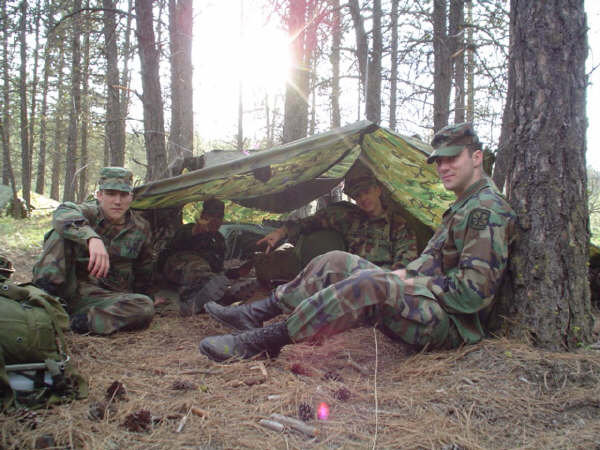Survival skills: How to make and hide a survival cache
02/01/2022 / By Zoey Sky

When SHTF, you might need to evacuate or bug out to a secure location if it’s no longer safe to stay at home. The journey can be long and tiring, and you might run out of supplies if the trip takes longer than you anticipated.
Prepare for the unexpected by hiding a survival cache along the path to your bug-out location so you can get more supplies as needed. (h/t to AskAPrepper.com)
Setting up a survival cache ahead of time might also benefit preppers who are unable to bear the full weight of all the gear they might need when bugging out.
Prepare for the inevitable by setting up a survival cache
A survival cache refers to a secret hiding place for a valuable, emergency stockpile that will help you survive after disaster strikes.
It’s best to hide your cache near a route you plan to take while bugging out. Make sure you prepare the cache before SHTF and keep it hidden in a secure location. This ensures that when it’s time to bug out, you know where to go if you need more supplies.
Your cache should be packed in a sturdy, waterproof and airtight container to protect its contents. When choosing a container, get something portable and easy to conceal.
The container you choose should be spacious enough to hold at least two days’ worth of supplies. You can use a smaller or bigger container, depending on how much you want to store in it.
Note that ammo cans are vulnerable to rust, especially if there are any scratches in the paint. It’s better to use a container made of sturdy plastic.
While you need extra space for your supplies, a bigger container might be harder to hide. Keep this in mind when choosing your cache container. (Related: Bug out survival planning: Prepping a bug-out bag in less than an hour.)
Where and how to hide your survival cache
Don’t just bury your cache in a random location. Before SHTF, look for a location that is close to the route to your bug-out location (BOL) but not directly on it.
If you incorporate overnight rest points along the route, place the cache a quarter mile or so from one of these points. Choose a spot that doesn’t have a line of sight between the cache and the overnight location for security.
Choose a spot that most people won’t think to search but is distinctive to you. You can also hide the cache near a permanent, natural feature that won’t decay or is hard to remove.
Once you decide on a location, the best way to hide your cache is to bury it. Bury the cache deep enough to hide it effectively, but not too deep that you can’t dig it out by yourself when you need it.
When burying the cache on grassy ground, cut away a square of turf and set it aside. Dig out a hole big enough for your container, then add six inches at the bottom.
As you dig out the soil, put it in strong sacks and cover the container in a plastic sack for an extra layer of waterproofing. Finally, lower it into the hole and fill the hole with soil.
Tamp the soil down firmly so it doesn’t settle and leave a visible depression over your cache because this will funnel rainwater down onto the cache and make it easier to find.
Once the hole is filled, replace the turf on top. After several days the cache should be invisible. Dispose of the rest of the soil at least a couple of hundred yards away and dump it somewhere inconspicuous, such as among the roots of a fallen tree.
What to include in your survival cache
Your cache will help ensure that you have enough supplies to complete the trip to your BOL so you need snacks, food and drinking water.
Prepare high-energy foods with a long shelf life dried fruit, granola bars and jerky, along with easy-to-prepare items dehydrated meals or ramen that only need hot water. Vacuum seal food for extra protection.
Water in sealed bottles will last a long time, especially if it isn’t exposed to sunlight. Purchase plastic bottles of non-carbonated water or store tap water in sterilized bottles. Add a purification tablet to get rid of bacteria.
If you plan to hunt or if you think you will need to defend yourself after SHTF, stock up on ammunition as well. Keep boxed ammo in sealed plastic bags, but don’t vacuum-seal it because it might cause moisture problems once the seal is broken.
You should also prep some first aid supplies because you might have to tend to minor wounds or injuries after SHTF.
When bugging out, having a survival cache or two along the way might just save your life.
Hide a survival cache near the route to your BOL so you can resupply if you need to or lighten your load before disaster strikes.

Sources include:
Submit a correction >>
Tagged Under:
bug out, disaster, off grid, preparedness, prepping, prepping supplies, self-reliance, SHTF, survival, survival cache, survival gear, survival planning, survival skills, survival supplies, tips
This article may contain statements that reflect the opinion of the author
Get independent news alerts on natural cures, food lab tests, cannabis medicine, science, robotics, drones, privacy and more from NewsTarget.com
Get independent news alerts on natural cures, food lab tests, cannabis medicine, science, robotics, drones, privacy and more from NewsTarget.com
RECENT NEWS & ARTICLES
COPYRIGHT © 2017 · SURVIVAL NEWS





















